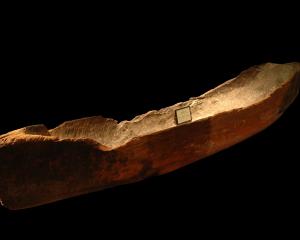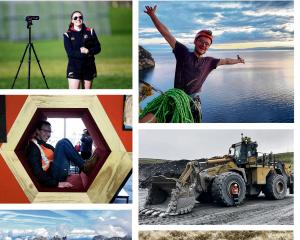The Trade Aid model provides genuine support for the poor of Bangladesh, writes Wyn Barbezat.
Bangladesh is perhaps not a "must see" destination for most travellers, and as a result Westerners who do go there are something of a novelty.
They are quite likely to be stared at, often at quite close range. For the Trade Aid Education Tour delegates who visited Dhaka and outlying villages earlier this year, it was the closest we got to celebrity status.
In February, a group of eight Trade Aid staff, volunteers and trustees visited Bangladesh as part of the annual self-funded education tour to meet some of that organisation's trading partners and producer artisans.
In its 39 years of existence, Trade Aid's philosophy has been to develop personal relationships with the partners with whom they trade.
For most of us, coming from various parts of New Zealand, it was our first visit to the Asian subcontinent. Among the world's poorest nations, Bangladesh had a painful birth as an independent nation in 1971. It faces more challenges, environmental and economic, than most countries. In the face of these challenges, the gains made are even more remarkable.
It was appropriate that our first visit was to our hosts for the week: Corr (Caritas Organisation for Relief and Rehabilitation) The Jute Works, which was Trade Aid's first trading partners. It was established in 1971 to work with the most disadvantaged in an already impoverished society. Most of the artisans employed were war widows. Using freely available and sustainable natural raw materials, corr The Jute Works artisans started making items from jute. They still produce a wide range of jute products, but have diversified into other gift and household items, most for the export market.
Corr The Jute Works also supports a group of Bihari refugees who became stateless victims as a result of partition.
These Urdu-speaking Muslims fled India at independence, were not welcome in Pakistan and until recently had few rights in Bangladesh. Today, they live in a "refugee camp" in tiny cell-like dwellings where they make a living producing handcrafts.
It was here that we had the first of many encounters with the warmest hospitality of a very generous people, involving the sweetest biscuits and confectionery.
Another organisation that has made a huge difference to the poorest of the poor in Dhaka is the YWCA. They now run schools and training programmes in the slums of Dhaka and are vocal on the rights of women.
It was in the countryside that we experienced another side of Bangladesh. Two nights spent in outlying villages (Bogra in the north and Agailjhara in the south) involved arduous travel through traffic that seemed to know no road rules. As horns blared and vehicles attempted suicidal overtaking manoeuvres, we maintained a blind faith that our driver knew we were keen to return home alive. Two hundred kilometres required an eight-hour journey in a minivan with no air-conditioning along rough, rutted roads, past brickworks and their towering chimneys, rice paddies verdant in the sunlight, and bullocks pulling ploughs as they have done for centuries. We crossed huge rivers by bridges 5km long and ferried across the Buriganga River at sunset.
All the groups we visited shared a common goal, one that adheres to the tenets of the World Fair Trade Organisation: working with the most disadvantaged in a fair and transparent way to enhance the standard of living and opportunities for the artisans and their families.
Traditional crafts, such as basket making and knitting are often carried out at home by women, working around household chores and child care, bringing in a steady income to households that used to rely on seasonal farm work.
The villagers received us in the traditional manner with singing and dancing, draping us with garlands of marigolds and showering us with flower petals. In each village, we were formally welcomed with food and drink, with producers' team leaders introducing their groups. We had the opportunity to hear, through interpreters, some of the stories of how fair trade and the opportunity to access international markets has helped these (mostly women) artisans to lift themselves from extreme poverty with a regular income, enabling them to provide education, food and clothing for their children. It was in the villages that we were able to observe how producers are adapting to the demands of international market trends.
Here, we saw progress through mechanisation and quality improvements while age-old traditional crafts were retained. Basket making, silk weaving, hemp products, ceramics and paper-making all have long traditions as crafts for personal use as well as an income-generating opportunity.
Some time was allowed for sightseeing in Dhaka. A weekend afternoon outing in a rowboat on the Buriganga River was a dubious highlight. The river is the main waterway through the city and is probably one of the most polluted in the world. We fervently hoped that we would not tip out of our small boat with its single oarsman into what could only be described as liquid Marmite.
Life along the banks of the Buriganga is raw and vibrant.
Children play with kites made from plastic bags, men dye fabric at the water's edge, dead animals decompose and mothers and daughters step out in their finery to visit the city.
Fortunately, our boatman was experienced and returned us safe and dry to the launching spot, where we made our way to the Pink Palace.
It was at the Pink Palace where, obviously foreign, as a group of seven women and one man, we had our first taste of "celebrity status". Being a fine weekend evening, it seemed that half of Dhaka was enjoying a day out. Here, we were mobbed by men wielding cameras, with smiling children and young men wanting to be in the picture. The Pink Palace was completed about 1870, and is an impressive reminder of former grandeur. It was built for a wealthy Mughal family.
After years of decay, it was restored to some extent and is now the National Museum.
The main reason for the trip was to see first-hand the difference that trading fairly, in a world characterised by inequality, can make to those who need it most. The realisation that what Trade Aid is doing is tangible, real and effective was rewarding. It was very gratifying to see the reality of Trade Aid's initiatives regarding distribution of New Zealand Government capacity-building funds and Trade Aid rebates (through sharing profit) made to our trading partners.
An example of this is a dehumidifier purchased using capacity building funds which will be used for drying paper in the wet season at Prokritee, one of Trade Aid's trading partners which specialises in paper-based products. The Trade Aid profit-share rebate was used to purchase woollen shawls for all 900 Prokritee women artisans.
Supporting Trade Aid is an opportunity to directly benefit those artisans who have very little, yet like the rest of us want to improve their lives and offer the best future for their children through education, better health and housing.
• Wyn Barbezat is a trustee of Dunedin Trade Aid and a Trade Aid education officer.












